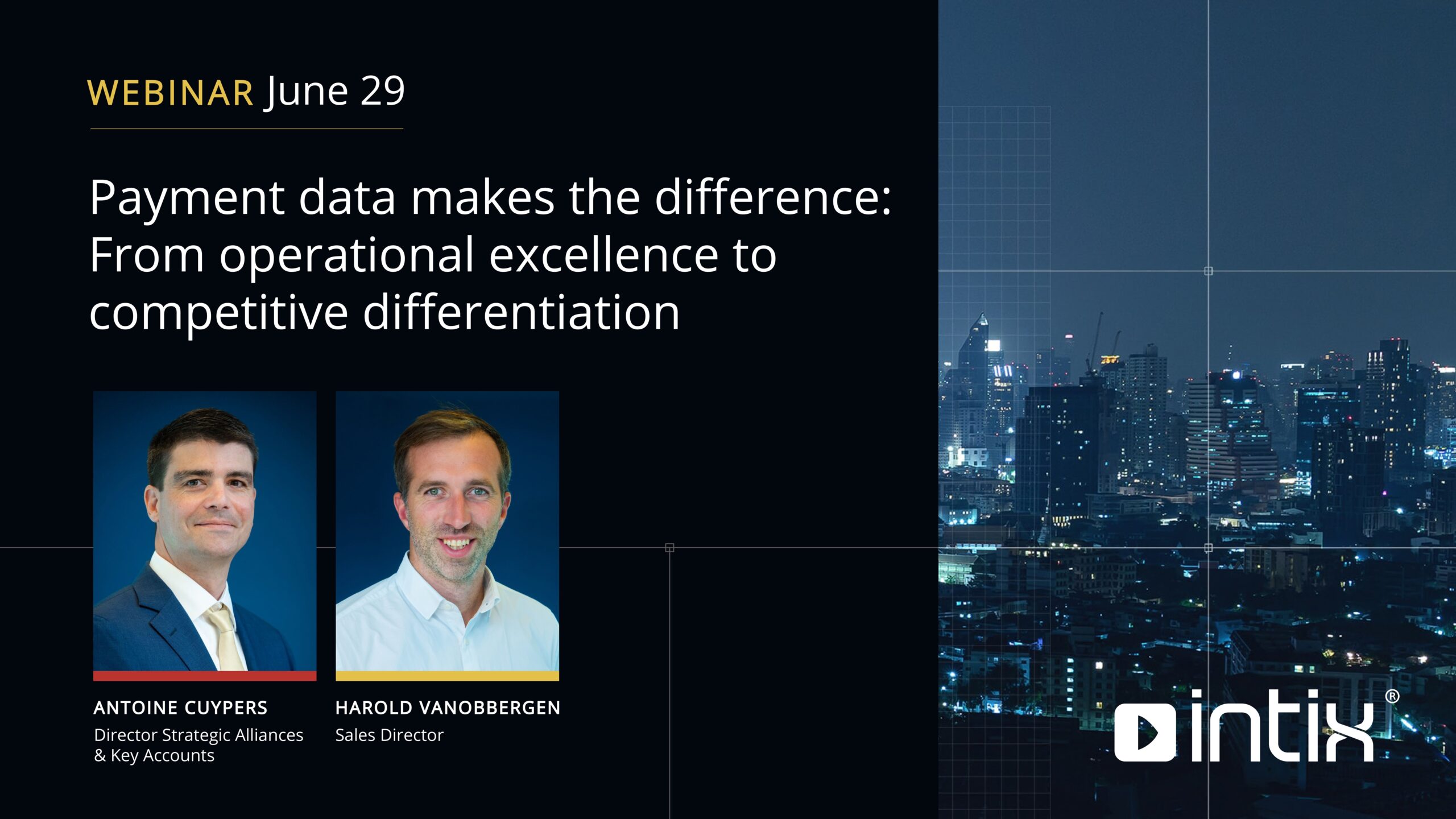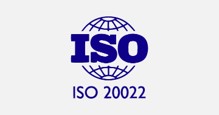- Cross Border Payments
- Data Use Cases
- Instant Payments
- Real Time Tracking
- SWIFT Analytics
- Swiftgpi
- Transaction Data
Creating new value – Intix off-the-shelf use cases help banks put their transaction data to work

We talked to Intix CEO Marc Braet about the use cases that financial institutions can take advantage of when wishing to put their transaction data to work.
What is meant with “transaction data”?
MB: “Transaction data refers to the information that represents usage of specific services and buying of specific products. In the consumer space, buying activities are tracked on digital platforms e.g., watching films and series on Netflix; buying on Amazon or Coolblue; … buyers’ activity is recorded by those platforms and used to tailor end-user experience. In financial services, the same concept applies whereby banks process f.i. payments for their corporate and FI clients and all the details about those flows represent transaction data. By putting this data to work, banks can further strengthen their operations, tailor their services and become more agile.”
There is much talk about the value of transaction data. Is this hype or reality?
MB: “It’s a very serious trend in transaction banking as the bank of the future will be all-digital and fully automated. Using transaction data is now seen as one of the ways to add value, soon it will become a matter of survival for banks. Transaction data includes all details on granular transactional flows that financial institutions process, such as customer payment instructions, inter-bank payments, statements, foreign exchange transactions, liquidity management instructions, financing flows, … there are also many events impacting those transactional flows (e.g., sanctions screening, booking, archiving, confirmations via SWIFTgpi) that we include in the scope of transaction data.”
“Banks use transaction data to strengthen operations and tailor services. This is a very serious move. Intix now covers a growing number of use cases for top10 and top50 banks.”, Marc Braet, Intix
Which challenges are banks facing in this area?
MB: “Banks come to Intix as they face two main challenges (1) identifying the opportunities to use that data and (2) enhancing their core IT infrastructure to make it happen. Intix helps financial institutions overcome those challenges whether this is to respond to regulatory reporting requirements or to become more agile and offer tailored services to their clients.”
Why are we talking about use cases?
MB: “The Intix data management technology is very adaptable which means it can be applied in various areas within financial services and on any transaction type (e.g., payments, securities, foreign exchange, financing). We therefore refer to use cases as the set of value-added capabilities we help banks implement for themselves and for their clients.”
“User experience will be a key differentiator of the bank of the future. Transaction data is the fuel to offer tailored services, as already demonstrated on consumer platforms”, Marc Braet, Intix.
Which type of use cases does Intix support?
MB: “Intix provides transaction data technology which can support any type of use case. Key is for the bank to have access to the required data. Some use cases are implemented completely by Intix (see below) whereas in other instances, Intix delivers the data to specialised applications such as RegTech, Compliance or Credit Management solutions. Intix then feeds transaction data to those third-party applications and the number of use cases grows further.”
“Whatever one’s business, the realities of today’s marketplace mean that those with the best data systems and capabilities will win — and by an increasingly outsize margin”, McKinsey
How can financial institutions leverage transaction data as a driver for competitive differentiation?
MB: “Knowledge triggers decisions. The Intix transaction data management technology delivers granular insights in real time to trigger the right decisions to sustain operational excellence and business development. For instance, an ageing or blocked payment instruction ought to be reported immediately to the Operations team to avoid negative consequences on both creditor and debtor. Also, automated insights on client transactions enable business development teams to pro-actively approach clients on specific flows (e.g., financing).”
“Banks needs to put their data house in order“, Marc Braet, Intix
Which are the use cases that financial institutions should start with?
MB: “Intix delivers highly adaptable and performant technology to increase visibility and control on transactional flows. We have developed off-the-shelf use cases that are addressing the needs of Operations teams with business activity monitoring and transaction integrity surveillance. Other use cases address the needs of Security teams such as combatting collusion fraud. Compliance teams need instant access to transaction data and flexible reporting which is another critical use case. The IT teams need to organise their messaging archives according to legal requirements. Also, both business and operations teams benefit from real-time analytics on their financial messaging flows.”
Which is the quickest way for banks to benefit?
MB: “All banks use Swift messaging and need access to their daily financial messaging activities. Intix embeds real-time analytics on Swift MT and ISO 20022 messaging natively. With the current pandemic impacting global trade and payment flows, Intix can help all Swift users benefit from continuous analytics on their correspondent banking activities.”
“For most [non-financial and financial] companies, using data for competitive advantage requires a significant data management overhaul. That includes identifying and assessing the value of existing data, designing a scalable data platform, and developing a long-term data strategy to help the organization achieve impact at scale. It also takes sustained commitment on the part of management, a willingness to make the up-front investment needed, as well as skilled advisers with the experience and technical resources to help organisations design and implement their programs.”, McKinsey
What is your recommendation to banks?
MB: “Start small, scale at your own pace is our tried-and-tested approach when working with both top10 and smaller institutions. We always recommend our clients to start implementing specific use cases and to gradually expand from there. The return-on-investment will be guaranteed as access to transaction data, automated analytics, reporting and real-time tracking will pay off. There is no need for an IT overhaul as the Intix solution has been designed to avoid intrusion and impact on existing systems.”
“Start small, scale at your own pace is our tried-and-tested approach when working with both top10 and smaller financial institutions”, Marc Braet, Intix
Find out more on xPLORE
Intix has already completed dozens of data management implementations at various types of financial institutions, central banks and market infrastructures. You can download the Intix use cases from xPLORE:
- Payment operations are as strong as its weakest link: BAM
- File to find: Legal archiving
- Compliance: seeing, checking, challenging, knowing
- Instant access = Instant Insight
- Trace the transaction to ‘Follow the money’
- Real-time analytics on your SWIFT messaging data
- Transaction Integrity Surveillance
- MT to MX linking
- Intix and SWIFTgpi offer the best of both worlds
- Monitoring instant payments – offering transparency in the instant world


